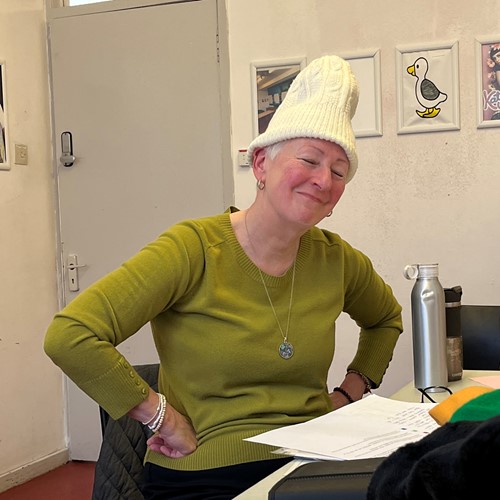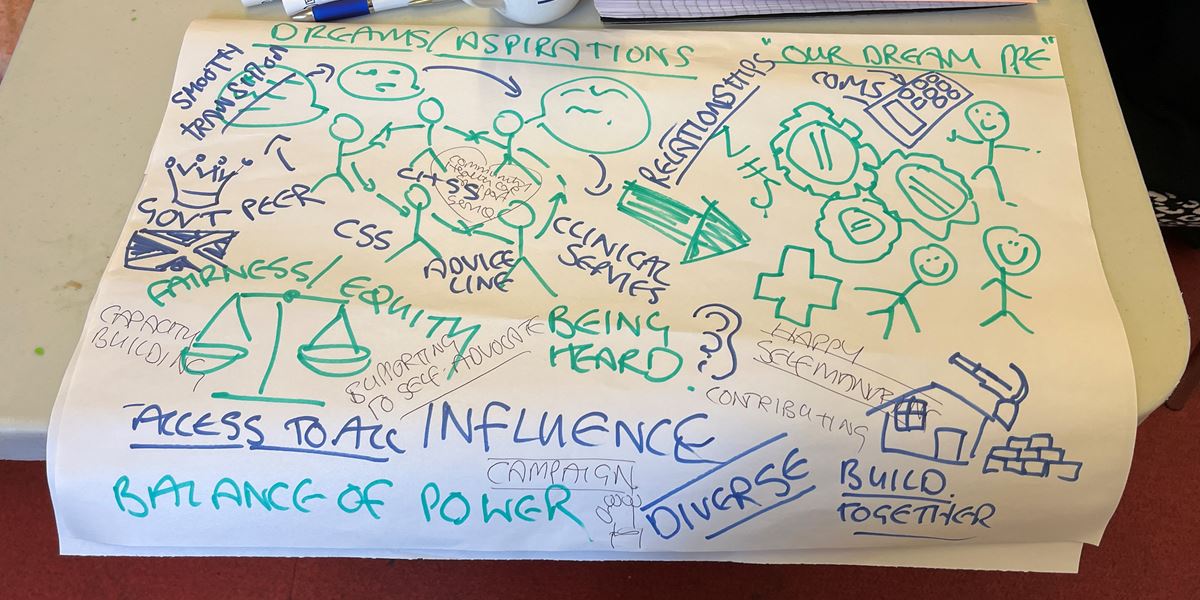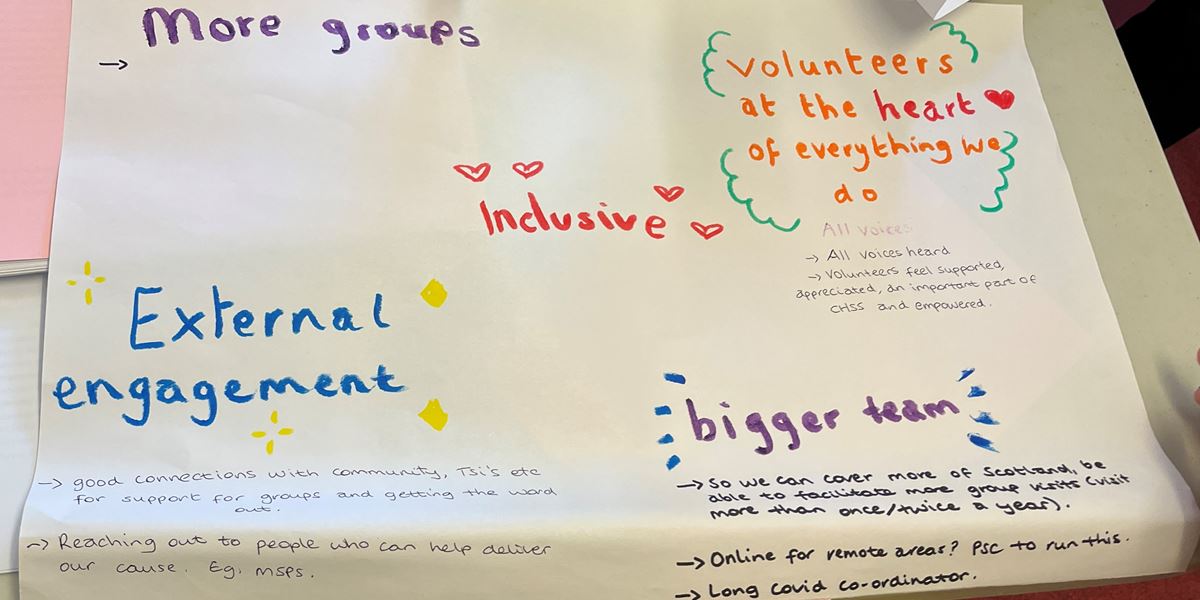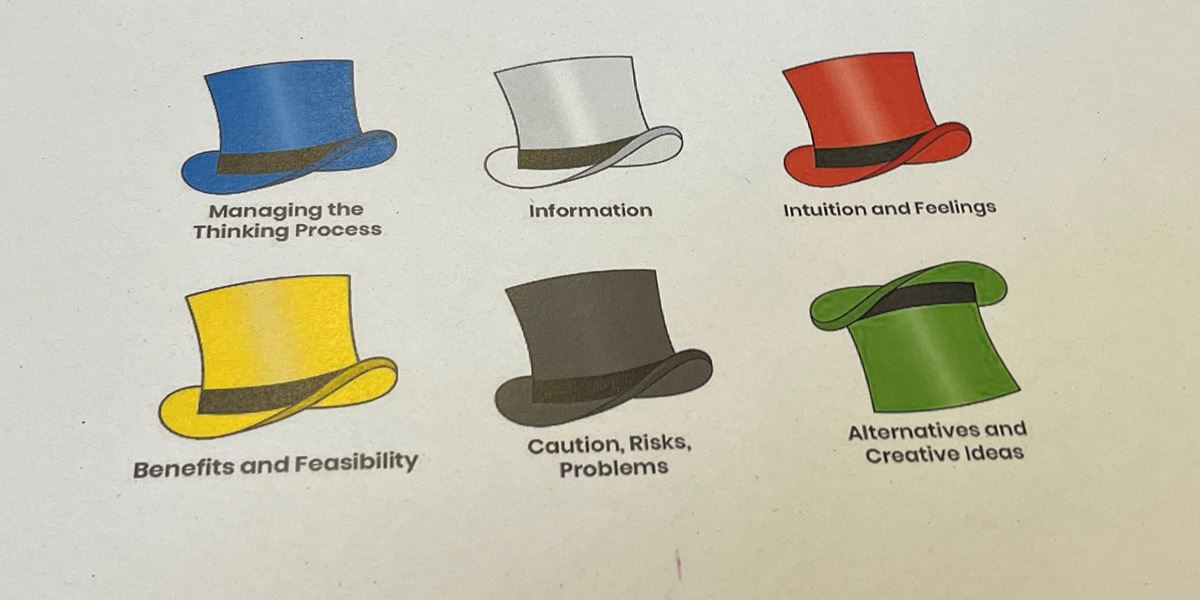Making a case for change
A team from Chest Heart & Stroke Scotland adapted our "making a case for change" approach to help them develop their annual operational plan.
Making a case for change is one of the workshops that make up our Voices Scotland training for communities. It helps groups to construct and present a logical and compelling case for change which is supported by appropriate evidence.
What we did
Peer, Participation and Engagement is a newly formed team at Chest, Heart and Stroke Scotland (CHSS) with a significant cultural change agenda. We want to establish stronger relationships with our Peer Support Group (PSG) communities with a view to expanding and developing that offer for service users living with chest, heart and stroke conditions. Our network of over 100 Peer Support Groups across Scotland is invaluable for providing opportunities for people to learn more about their conditions, socialise and speak to others who understand what they’re going through.

In the process of drafting our 2024-25 operational plan, we held two team events. At the first in-person event, we started with a visioning activity which helped us identify the key topics and issues for the year. Using plenty of paper, coloured pens and crayons, we unleashed our inner creativity to draw a picture of our ideal service offer.
We then used Edward de Bono’s 6 thinking hats activity to discuss and prioritise our top 3. This approach encouraged participants to don different coloured hats to represent the 6 thinking styles, which enabled a wide ranging, imaginative and entertaining discussion!
The top 3 needs we identified were:
- increased staff and volunteer capacity to support the expansion and development of PSG communities
- robust data for the team to effectively manage groups, identify shortcomings and evidence success and to support PSGs in digital literacy
- a robust communication and engagement channel for colleagues and PSGs to feel involved and participate
Day two was an online event during which we adapted the making a case for change template to make it relevant and useful to formulating our operational plan. Team members completed the template online by adding virtual post-it notes to a Miro board.
This was a simultaneous, collaborative, and anonymous process during which all contributions were welcomed and included. To ensure contributions were relevant, participants were asked to reflect on the relationship between their point and the charity's strategy.
The result was a conglomeration of issues, ideas, suggestions, concerns, testimony, and evidence.
Two team members then sorted the post-it notes into themes, which made it easier to see the core concerns and priorities.
Impact
The compilation of the 2024-25 operational plan was made much easier by this exercise. The plan "wrote itself".
We have established a culture of participation and engagement within our team.
We will definitely return to this template when we need to write our 2025-26 operational plan!
Benefits
Team members feel valued as they have directly impacted our operational plan.
Team members better understand and can commit to priorities because they decided them.
Team members are excited to measure our progress against the plan.
The two team events were also opportunities to get to know each other more deeply and to recognise each other’s different strengths.
Chest, Heart and Stroke Scotland’s Chief Operating Officer witnessed and took part in the collaboration and formulation of the plan and has complete faith in the team to achieve what we plan to do.
Challenges
The original making a case for change template format didn’t quite suit our needs, so we needed to think carefully about what we wanted to achieve and how the prompt questions could be revised accordingly.
We also found the order of questions needed to change to suit our flow of thinking. For example we felt it was better to ask about the connection with strategy after rather than before ‘what needs to change’.
For this to be a truly collaborative exercise, it needed to be completed together as a team. Location makes that challenging for us, so working online using Miro was a good solution. It also meant we could each contribute freely and liberally.
Contact
Emma Knox (Peer Participation & Engagement, Chest Heart & Stroke Scotland)
Email: emma.knox@chss.org.uk
Images credit: Chest Heart & Stroke Scotland



